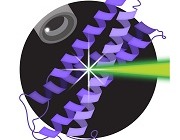Biomolecular machines are biomolecular complexes that can engage on complex biological activities that require coordinating many different enzymatic steps. The most famous biomolecular machines and their function are the Ribosome translating polypeptides from RNA, the spliceosome, removing introns from pre-mRNA, the DNA polymerase in charge of replicating DNA and RNA polymerase in charge of synthesizing RNA from coding regions of DNA, among many other biomolecular machines.
RNA polymerase (RNAP), for example, binds a gene, melts a transcription bubble which will allow an open reading frame for RNAP, and translocates on top of DNA as a function of the insertion and addition of the correct bases to the 3' tail of the nascent transcript. RNAP can also pause, undergo back-translocations, proper & improper DNA:RNA interactions, engages with transcription factors as well as transcription-translation coupling factors as well as transcription:repair coupling factors, and many other activities. All of these activities are coordinated within the transcription complex in an allosteric manner. How are all of these activities encoded in the structure of the transcription complex and how are they orchestrated? Answers to these questions are partly available from the rich information found in high-resolution structures of the transcription complex in various stages of conditions. Indeed, the protein databank (PDB) includes a myriad of such high-resolution structures, even if one focuses just on the system from E. coli. However, even with this rich resource, it is unclear (i) whether all of the conformations of the transcription complex in all stages and states of transcription are documented, and (ii) how all of the structures are mechanistically connected. If only we would have had a real-time movie, at high resolution, which can show the mechanism in full. In this project, our goal is to provide an atomic-resolution objective structural movie of transcription.
By performing single-particle Cryo-EM, cross-linking mass spectrometry and single-molecule fluorescence experiments, and combining their results in structural modeling, we are able to retrieve high-resolution structure models of all conformations of the transcription complex in each transcription stage, compare to the existing information in the PDB and by that identify the uniqueness of structures. Then, performing either immobilized single-molecule experiments in equilibrium or single-molecule experiments in kinetics we can 'connect the dots', namely relate the structural information we acquired along a time axis throughout the process of transcription.

